Rebecca E. Hirsch's Blog: Rebecca E. Hirsch, page 2
September 2, 2022
Night Creatures at National Book Festival
Pennsylvania Center for the Book has chosen Night Creatures as its Great Reads from Great Places selection.
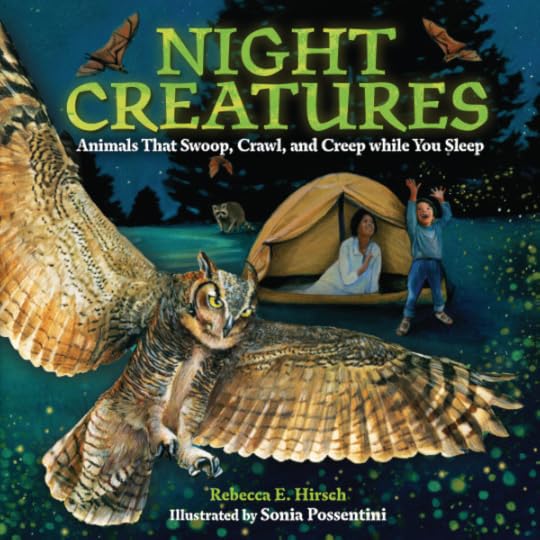
Great Reads from Great Places is a list of books representing the literary heritage of the 50 states, the District of Columbia, Puerto Rico, the U.S. Virgin Islands and the Pacific island territories. Each selected book will be featured at the National Book Festival in Washington, D.C. on September 3.
It’s an honor to represent my home state, and congratulations to all the winners! You can see video interviews with all the winners here.
July 1, 2022
Plants in Chicago
I am thrilled that the Chicago Public School system has included PLANTS CAN’T SIT STILL in its new Skyline curriculum.
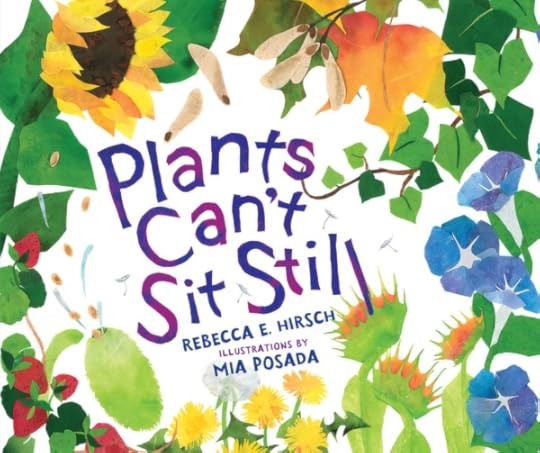
Skyline is a new standards-based curriculum designed specifically for students in the Chicago Public Schools, the third largest public school system in the U.S.
It’s an honor to have Plants Can’t Sit Still reaching kids in Chicago!
August 28, 2021
Discover Night Creatures
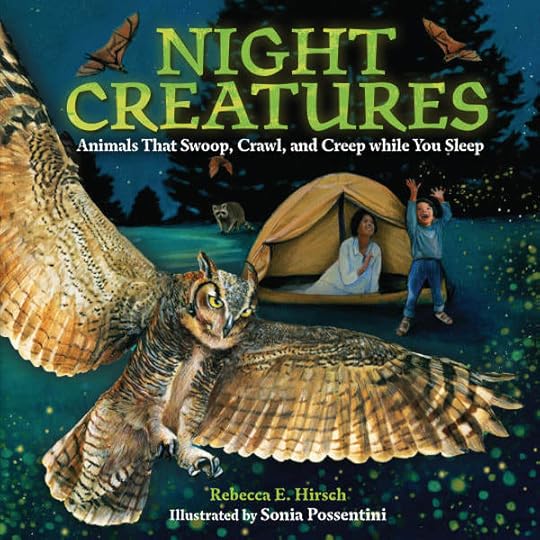 I'm thrilled to give you a SNEAK PEEK into my new book Night Creatures. It launches on September 7, but here are some fun meet-the-book resources to get you started:
I'm thrilled to give you a SNEAK PEEK into my new book Night Creatures. It launches on September 7, but here are some fun meet-the-book resources to get you started:WATCH. You'll find the Night Creatures book trailer on KidLit TV and Youtube. My husband, the fabulous composer Rick Hirsch, created the music. I think you'll love it as much as I do!
LEARN. You can hear the inspiration book and read a review on Maria Marshall's The Picture Book Buzz.
DISCOVER. You can take a peek inside the book on Lerner's website.
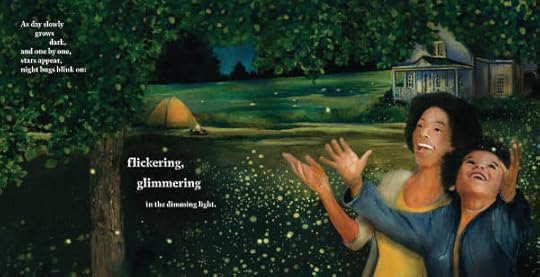
April 16, 2021
A Season for StoryWalks!
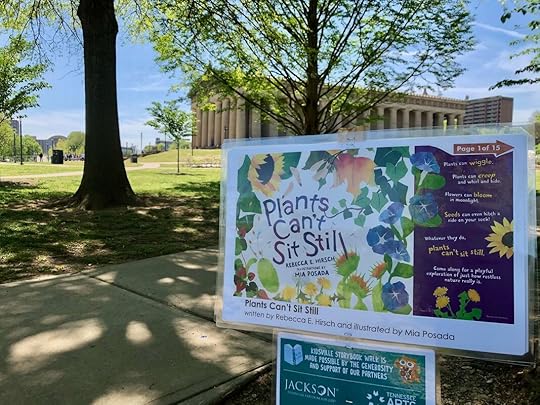 Wow! Plants Can't Sit Still is featured at two StoryWalks this week—one in Paducah, Kentucky, and another in Nashville, Tennessee (pictured above). At each location, families and friends can enjoy a socially distanced walk in the sunshine while learning about how plants move—and moving their own bodies as well!
Wow! Plants Can't Sit Still is featured at two StoryWalks this week—one in Paducah, Kentucky, and another in Nashville, Tennessee (pictured above). At each location, families and friends can enjoy a socially distanced walk in the sunshine while learning about how plants move—and moving their own bodies as well!In Nashville, you'll find the StoryWalk at Centennial Park. It runs through the end of this week, April 25. Click for details.
In Paducah, the StoryWalk is at the McCracken County Public Library garden and runs through May 3. Click for more info.
October 8, 2020
The Story Behind the Book: Living Fossils
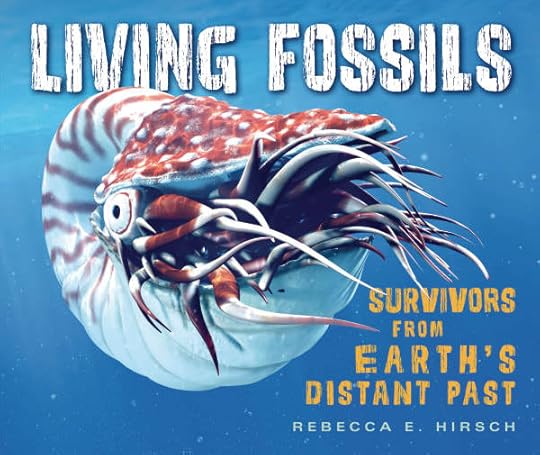 In the history of life on Earth, 99.9 percent of all species have gone extinct. But a few animals have survived since the time of the dinosaurs, or since long before the dinosaurs. Charles Darwin famously called them “living fossils.”
In the history of life on Earth, 99.9 percent of all species have gone extinct. But a few animals have survived since the time of the dinosaurs, or since long before the dinosaurs. Charles Darwin famously called them “living fossils.”Living Fossils: Survivors from Earth's Distant Past shines a spotlight on six wonderfully living fossils: the horseshoe crab, the chambered nautilus, the African lungfish, the tuatara, the duck-billed platypus, and the venomous solenodon.
While researching these animals, I talked with scientists on four continents. I am extremely grateful to these gifted scientists for taking time to talk with me and share their knowledge and insight. I send my sincere thanks to Jennifer Basil, Jeak Ling Ding, Josh Griffiths, Marc Jones, Heather King, Carlos Meloro, and José Nuñez-Miño. Thanks to their help, the book includes new discoveries about living fossils and what they reveal about the history of life.
Once I began talking to these dedicated men and women I realized that most of these species are endangered by human activity. And so conservation became a core part of the story.
In a shining review, Kirkus called Living Fossils “well-organized, clearly written, nicely designed, and including new research… a satisfying selection of nature’s survivors for readers intrigued by the animal world.” The book is a Junior Library Guild selection.
August 30, 2020
Monarchs, Milkweeds, and Pesticides
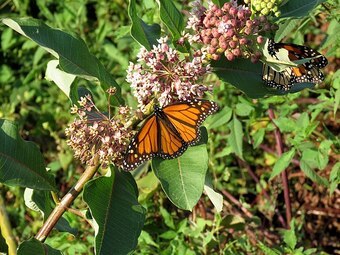 I'm thrilled to have my first article appear on Science News for Students.
I'm thrilled to have my first article appear on Science News for Students.The article describes a new finding that milkweeds in California are widely contaminated with pesticides. Could poisoned food for monarch caterpillars be contributing to a dramatic decline in the region's population of monarch butterflies?
You can read the article here.
January 6, 2020
Planting Seeds
Judge each day not by the harvest you reap, but by the seeds you plant.
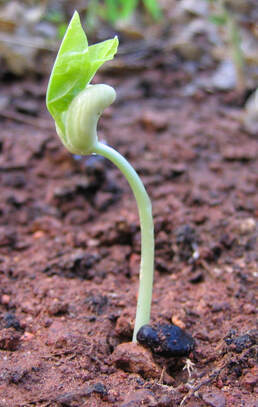 Source: Vinayaraj via Wikimedia I planted a lot of seeds in 2019.
Source: Vinayaraj via Wikimedia I planted a lot of seeds in 2019. Not all of these seeds germinated, but I'm delighted with the ones that did.
In 2019, I spent time observing nature. I read beautiful books. I collected ideas. I turned some of these ideas into queries and proposals and articles and books. I landed new book contracts. I spoke by phone and Skype with scientists all over the world. I attended NCTE where I met wonderful writers, editors, educators, and librarians. I launched new books into the world, including one that was named to the AAAS/Subaru Longlist.
What seeds do I hope to plant in 2020?
Many seeds I planted last year grew so well, I'll be tucking the same varieties into the ground again this year.
In 2020, I will spend time in nature. I will collect ideas. I will turn my ideas into articles and books. I will work to land new contracts. I will reach out to scientists and other experts who can inform my work. I will support my friends and colleagues in the kidlit community. I will read books that represent the best of children's literature.
What seeds will you be planting in 2020?
I hope you have a wonderful new year! Happy planting!
November 21, 2019
The Story Behind the Book: Where Have All the Bees Gone?
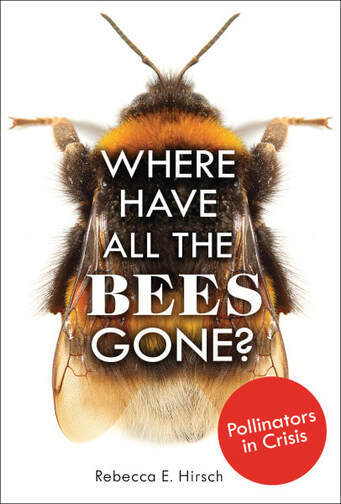 What is happening to bees?
What is happening to bees?That question led me on the winding trail that runs through Where Have All the Bees Gone? Pollinators in Crisis.
Like many people, I had been hearing news reports about declines among managed honey bees for years. But a few years ago, while researching The Monarchs Are Missing: A Butterfly Mystery , I began to get hints that the problem ran deeper.
Many of the scientists, master gardeners, teachers, and butterfly experts I was interviewing wanted to talk wild bees. They told me that native bees were in trouble, too, not just monarchs and managed honey bees. I decided to investigate.
The book dives into the world of wild bees, the ones that are pollinating the bulk of our food. It traces the history of bees, all the way back to the dinosaurs, and explains why bees are so important to us and the world we live in.
The stars of the book are the cute and fuzzy bumblebees. They are the work-horses of the wild pollinator world. And they are in trouble.
Bumblebees have been disappearing in North America and around the world. Some species are on the brink; others may already be extinct.
The book explores what scientists know about what's causing the declines and what questions they still have. The list of culprits include parasites, pesticides, climate change, and habitat loss.
The book ends on a hopeful note, explaining what everyone can do to help bees.
In a starred review, Booklist calls it "well-balanced and objective… An important resource for all libraries."
Where Have All the Bees Gone? is a Junior Library Selection. It releases February 4th from Twenty-First Century Books.
October 31, 2019
Cheers for AAAS/Subaru
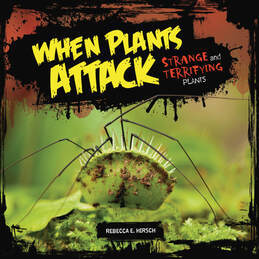 The 2020 AAAS/Subaru SB&F Prize for Excellence in Science Books was announced last week and I was thrilled and honored to see WHEN PLANTS ATTACK on the Middle Grade List. Thank you, AAAS/Subaru judges!
The 2020 AAAS/Subaru SB&F Prize for Excellence in Science Books was announced last week and I was thrilled and honored to see WHEN PLANTS ATTACK on the Middle Grade List. Thank you, AAAS/Subaru judges!The prize is awarded in four categories. It celebrates outstanding science writing and illustration for children and young adults. The prize encourages readers to turn to science books for information and enjoyment, too.
Cheers for all the books on this year's lists. Some I had not seen before the list was announced. How had I not seen them? My reading list just got longer.
The finalists will be announced in November.
September 11, 2019
The Story Behind the Book: The Monarchs Are Missing
 Growing up, I loved watching monarch butterflies flit in the sunshine. But I never knew they were long-distance travelers.
Growing up, I loved watching monarch butterflies flit in the sunshine. But I never knew they were long-distance travelers.As an adult I learned that monarchs migrate from across the eastern US and Canada all the way to Mexico.
In other words, a butterfly that flies on paper-thin wings and weighs no more than a grape travels up to 3,000 miles.
I thought, everyone needs to know about this.
I began to mull over possibilities for writing a book. But could I contribute something new? Many wonderful books had been written about monarch migration for children, like this one and this one. My book idea stayed on the back burner.
Then the situation changed. In early fall of 2012, I had signed up to take my children to a monarch tagging event. That day I got a phone call that the event was canceled. The reason? There were no monarchs flying around.
I began to notice news and scientific reports of declining monarch numbers. Milkweed, I heard, that was the problem. Some scientists had concluded there wasn't enough milkweed, the monarch's host plant. The public latched onto this idea.
But then I started hearing that not all scientists agreed. Some had found evidence of a mysterious problem on the fall migration. Monarchs were departing but not arriving in Mexico. Why are they missing? What could be happening to them?
In the summer of 2015 I started digging in with more research. I talked with the person who had called me to tell me the monarch tagging was canceled. I wanted to hear her perspective on how monarchs were doing.
As summer gave way to fall, I visited schools that were raising monarchs or gardening for butterflies, and talked with kids and teachers.
 I found instructions on the internet for making a butterfly net. I made a net, headed outside, and taught myself how to catch monarchs.
I found instructions on the internet for making a butterfly net. I made a net, headed outside, and taught myself how to catch monarchs.In late September, the height of the migration here in Pennsylvania, I recruited my youngest daughter and her friend to tag monarchs with me. My middle daughter came along and snapped photos. Our adventure became the opening of the book.
As fall slipped into winter, I phoned up many of the leading scientists who work on monarchs. They shared with me their ideas about what was happening. Some thought it was milkweed. Some found clues that other culprits were involved, like changes in climate or a disease. Some thought there wasn't really a problem at all, and that monarchs were doing fine.
I sorted through these conflicting ideas and arrived at what I believed was the most accurate take-home message:
Monarchs are declining—their numbers in Mexico are clearly down. But we don't know why. Probably there are a lot of causes—from diseases to deforestation of their winter habitat, from milkweed to climate change. The good news is that monarchs have the ability to bounce back quickly, and we can all give them a helping hand.
The book concludes with back matter that gives readers plenty of ideas for how they can help bring the monarchs back.
Rebecca E. Hirsch
- Rebecca E. Hirsch's profile
- 56 followers



